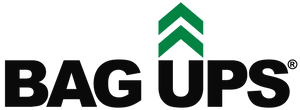How To Organize Your Home Recycling

Recycling is one of the most important things you can do to reduce landfill waste and keep the planet clean and beautiful. Once you get involved in organizing your home’s recycling, you will feel a sense of accomplishment. The following information clues you in on how to organize different recyclables.
Recycling Plastic Bags
Use biodegradable garbage bags to eliminate plastic bags around the home.
To begin organizing your recyclables, start with plastic bags. If you recycle any plastic bags that contain food, make sure any of the food residue is removed. You can organize and add the following plastic bags in a bin, as follows:
- Plastic produce and grocery bags
- Plastic newspaper bags
- Plastic bags that held cereal, frozen food, or bread (again, make sure the bags are cleaned of any crumbs or food)
- Plastic shrink wrap (no bubble wrap)
- Zip-lock plastic bags, with the zip closure removed
Recycling Cardboard
You should also have a bin for cardboard, and not just the corrugated cardboard used for shipping. You can also add the cardboard or paperboard that holds foods, such as crackers or cookies. Just make sure you don’t leave any food waste. For example, don’t add a greasy pizza box in with your cardboard recyclables. Also, open up the boxes completely so you can fit them inside your recycling bin.
Recycling Papers
Another recycling bin in your home can be used to hold papers. Separate the paper from the newspapers, as recycling centers normally recycle newspapers separately. The paper bin should include all types of office paper, junk mail, and magazines. You can add glossy papers to paper recycling. In addition to keeping the newspapers separate, you might create a separate stack of magazines, as well, as they are more voluminous.
Some Basic Recycling Guidelines to Follow
When it comes to metal and glass, you can save aluminum foil for recycling at home. Again, make sure to clean the foil of any food residue before adding it to its own recycling bin.
Types of Glass Products You Cannot Recycle
While most types of glass can be recycled, you cannot recycle the following:
- Ceramics
- Pyrex™
- Window or mirror glass
- Crystal
- Light bulbs*
*You typically can recycle compact fluorescent lamps (CFL) light bulbs at a hardware store.
Separating Container Plastics (Including Water and Soda Bottles)
You can recycle most container plastics with resin numbers stamped on the bottom of the container of 1 to 7. Separate plastic bottles from other container plastics. When you make this a practice, you will be able to tell the differences in the types of plastics so they can be recycled more efficiently. Different plastics cannot be recycled together, so this information is helpful and good to know.
Stamped Numbers of Plastics – What They Mean
Number 1
Most of plastic containers that are recycled are either stamped 1 or 2. Number 1 plastics or PETE (polyethylene terephthalate) plastics represent soda bottles, water bottles, medicines containers, and bottles that contain cooking oil.
Number 2
Number 2 plastic containers represent HDPE (high-density polyethylene) plastics, or containers used for laundry/dish detergents, shampoo, milk, conditioners, grocery bags, and various toys.
Number 3
Number 3 plastics represent V or polyvinyl chloride plastics, and include pipes, clear medical tubes, vinyl dashboards, seat covers, and shower curtains.
Number 4
Number 4 plastics include LDPE or low-density polyethylene plastics, and include products, such as grocery bags, wrapping films, and sandwich bags. Most municipalities will accept all these types of plastics at their facilities except grocery bags, which can get stuck in the sorting machines. Check with the recycling facility to make sure what is accepted.
Separate out the grocery bags and give them back to the store, if it has a recycling box. You can also repurpose the bags for shopping and for carrying books. Some thrift stores will also accept grocery bags for repurposing.
Number 5
Number 5 plastics include PP or polypropylene plastics, such as Tupperware™, orange medicine containers, plastic caps for soda bottles, and yogurt tubs.
Number 6
Number 6 plastics include polystyrene plastics, such as plastic cups, disposable cups and cutlery (both clear and in colors), packing peanuts, Styrofoam coffee cups, and insulation made of Styrofoam.*
*Most municipalities will not take packing peanuts or anything made of Styrofoam, as they become contaminated easily by food.
Number 7
Number 7 plastics are usually made of a less commonly used plastic or with a combination of plastics (numbered 1 through 6). These biodegradable plastics may be non-petroleum based, or made of products, such as corn.
Some Recycling Tips
Some Recycling Tips
When separating plastics, make sure you separate the bottles from the caps, as the bottles normally are number a number 1 and the caps are number 5, and these 2 plastics cannot be recycled together.Also, even if you believe you know the number of a plastic, always check for a recycling number and
confirm it before sorting the plastic.
What to Use to Organize and Store Your Recyclables
To store your recyclables, it is probably best to choose bins that are stackable, and come in different colors, so you can color-code your items for repurposing.
Set Up a Recycling Space
Set up a recycling space either inside a cabinet or outside, so you can stay committed to repurposing recyclables. Learning how to organize waste in this way will help you see the value in both recycling and managing waste.
++++++++++++++++++++++++++++++++++++
Have questions about how you can help save the planet?
Contact us at BagUps.
Want to join the thousands of others committed to a cleaner tomorrow?
Get a BagUps subscription today.
++++++++++++++++++++++++++++++++++++
Additional Information About Saving The Planet
Living An Eco Friendly Lifestyle
My Favorite Kitchen Product Is Bagups
How Can I Be Even More Eco Friendly
